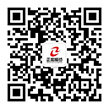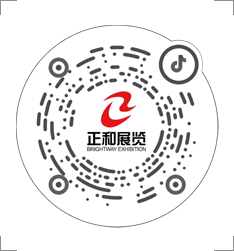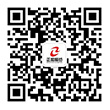Details
240-hour stay, +21 ports, China's transit visa exemption policy is fully relaxed and optimized starting today
12-24
The National Immigration Administration announced today (December 17) that, starting December 17, the transit visa exemption policy will be comprehensively relaxed and optimized. The stay time for foreign nationals with transit visa exemptions will be extended from the original 72 hours and 144 hours to 240 hours (10 days). Simultaneously, 21 additional ports will be added as entry and exit ports for transit visa exemption personnel, and the areas for permitted activities will be further expanded.
Eligible personnel from 54 countries, including Russia, Brazil, the United Kingdom, the United States, and Canada, transiting through China to a third country (region) can enter China visa-free from any of the 60 open ports in 24 provinces (autonomous regions, municipalities) and stay within the designated area for no more than 240 hours.
The 21 newly added ports for the relaxed and optimized transit visa exemption policy include:
1. Taiyuan Wusu International Airport, Shanxi Province
2. Wuxi Sunan Shuofang International Airport, Jiangsu Province
3. Yangzhou Taizhou International Airport
4. Wenzhou Longwan International Airport, Zhejiang Province
5. Jinhua Yiwu International Airport
6. Hefei Xinqiao International Airport, Anhui Province
7. Huangshan Tunxi International Airport
8. Fuzhou Changle International Airport, Fujian Province
9. Quanzhou Jinjiang International Airport
10. Nanping Wuyi Mountain International Airport
11. Nanchang Changbei International Airport, Jiangxi Province
12. Jinan Yaoqiang International Airport, Shandong Province
13. Yantai Penglai International Airport
14. Weihai Dashuibo International Airport
15. Zhangjiajie Hehua International Airport, Hunan Province
16. Nanning Wuxu International Airport, Guangxi Province
17. Beihai Fucheng International Airport
18. Haikou Meilan International Airport, Hainan Province
19. Sanya Phoenix International Airport
20. Chengdu Tianfu International Airport, Sichuan Province
21. Guiyang Longdongbao International Airport, Guizhou Province
Thus, the number of applicable open ports has increased from 39 to 60.
The comprehensively relaxed and optimized 240-hour transit visa exemption policy further expands the areas for permitted activities. The applicable provinces have increased from the original 19 provinces (autonomous regions, municipalities) – Beijing, Tianjin, Hebei, Liaoning, Heilongjiang, Shanghai, Jiangsu, Zhejiang, Fujian, Shandong, Henan, Hubei, Hunan, Guangdong, Guangxi, Chongqing, Sichuan, Yunnan, and Shaanxi – to include Shanxi, Anhui, Jiangxi, Hainan, and Guizhou, for a total of 24 provinces (autonomous regions, municipalities).
Among the newly added 5 provinces:
• For Anhui, Hainan, and Guizhou provinces, the permitted activity area is the entire province.
• For Shanxi Province, the permitted activity area is Taiyuan and Datong cities.
• For Jiangxi Province, the permitted activity area is Nanchang and Jingdezhen cities.
In addition:
• The permitted activity area has been expanded to the entire province for Fujian, Hubei, and Shaanxi provinces.
• The permitted activity area in Guangxi Zhuang Autonomous Region has been expanded to include 12 city administrative regions: Nanning, Liuzhou, Guilin, Wuzhou, Beihai, Fangchenggang, Qinzhou, Guigang, Yulin, Hezhou, Hechi, and Laibin.
Foreign nationals entering China through the transit visa exemption policy can travel across provincial boundaries within the permitted activity areas of the above 24 provinces (autonomous regions, municipalities).
Applicable Conditions for Foreign Nationals Applying for the 240-Hour Transit Visa Exemption Policy
First, they must be citizens of one of the 54 countries eligible for the transit visa exemption policy:
• European countries (40): Austria, Belgium, Czech Republic, Denmark, Estonia, Finland, France, Germany, Greece, Hungary, Iceland, Italy, Latvia, Lithuania, Luxembourg, Malta, Netherlands, Poland, Portugal, Slovakia, Slovenia, Spain, Sweden, Switzerland, Monaco, Russia, United Kingdom, Ireland, Cyprus, Bulgaria, Romania, Ukraine, Serbia, Croatia, Bosnia and Herzegovina, Montenegro, North Macedonia, Albania, Belarus, Norway;
• American countries (6): United States, Canada, Brazil, Mexico, Argentina, Chile;
• Oceania countries (2): Australia, New Zealand;
• Asian countries (6): South Korea, Japan, Singapore, Brunei, United Arab Emirates, Qatar.
Second, they must hold a valid international travel document with a validity period of no less than 3 months and meet the entry requirements for the third country (region).
Third, they must hold a connecting ticket or relevant proof of travel to a third country (region) with confirmed dates and seats within 240 hours, fill out a temporary entry card for foreign nationals, and accept inspection and questioning by the border control authorities.
Foreign nationals meeting the above conditions can apply to the border inspection agencies at 60 ports in cities such as Beijing and Shanghai. The border inspection agencies will handle their temporary entry procedures, and the visa-free stay will be calculated from 00:00 on the day after entry. Those who meet the requirements of visa exemption agreements signed with China or China's unilateral visa exemption policies can follow those regulations.
Ports and Permitted Activity Areas Applicable to the 240-Hour Transit Visa Exemption Policy




Latest News





